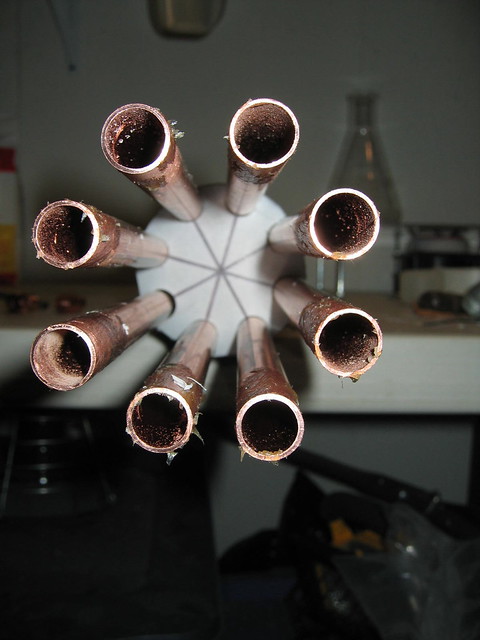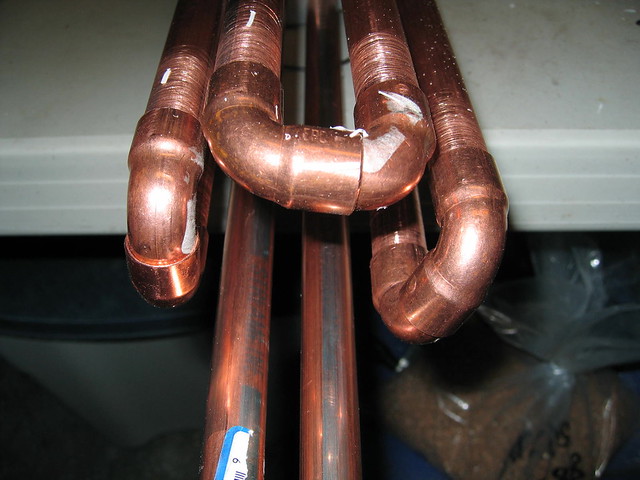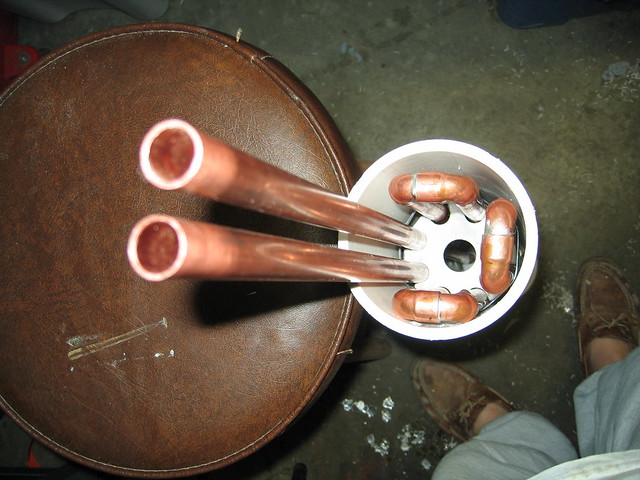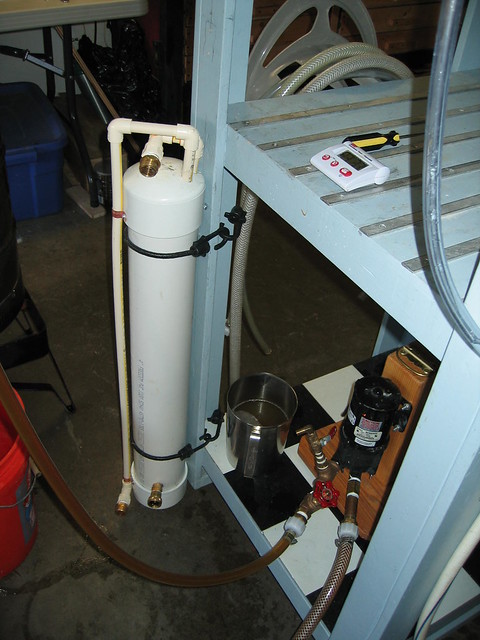Should I go with 3/4 tubing and barbs for a 1/2 system (meaning my pots and pump are 1/2") Looks like if I do 1/2" barbs (SS threaded or Tri-Clover) they will restrict my flow. Thoughts?
You are using an out of date browser. It may not display this or other websites correctly.
You should upgrade or use an alternative browser.
You should upgrade or use an alternative browser.
tubing size for 1/2 line
- Thread starter Bixter1
- Start date

Help Support Homebrew Talk - Beer, Wine, Mead, & Cider Brewing Discussion Forum:
This site may earn a commission from merchant affiliate
links, including eBay, Amazon, and others.
I personally don't think its necessary. 1/2" Tubing and fittings is fine for homebrewing system sizes. If you are going to a full barrel brewery, then maybe 3/4" and bigger pumps would benefit you.
IMO, for optimum performance with minimal resistance it's best to maintain a minimum ID of 1/2" throughout your system. This includes all fittings and barbed fittings in particular. I use 5/8" ID x 7/8" OD tubing for just this reason. A 5/8" barbed fitting has an actual ID of only 1/2" or so. The tubing size is most critical on the suction side of the pump where restrictions can increase the potential for cavitation problems. I want to have the ability to pump at high flow rates and the tubing size makes a huge difference in this regard. You need only compare the cross sectional area of 3/8" vs 1/2" (ID of 1/2" barb vs ID of 5/8" barb) to see that the slightly larger fitting ID's have nearly double the cross sectional area. The larger 5/8" ID tubing would be about a 50% increase in cross sectional area over the 1/2" ID tubing. The difference is quite large and so is the performance. OTOH, it much depends on how you have your system set up as to whether it makes any difference or not. I want the ability to pump at a fast rate when doing the circulation loop back to the boil kettle through a CFC. The other pumping tasks do not require a high flow rate, but everything seems to work better with the larger tubing. Priming is easier and I never have a problem with anything getting plugged up with hop or grain particulates as would sometimes happen with smaller tubing and fittings. The other added benefit of larger tubing is that the wall thickness is usually heavier and this helps prevent kinking or collapse when suction is applied while pumping hot liquids. Bottom line for me is bigger is better. JMO, nothing more.
I can see in that situation a larger ID would be beneficial. Is your CFC 5/8" ID?
I can see in that situation a larger ID would be beneficial. Is your CFC 5/8" ID?
Yes, my DIY CFC was constructed using 20 ft of 1/2" hard copper pipe (1/2" ID x 5/8" OD). The CFC was designed specifically to provide a high flow rate. It's the weird one. You may have seen it before in another post:




Definitely a special case for your setup Catt22.
So the question should be, are you pumping through anything larger than 1/2" Bixter1?
Going with 5/8 or 3/4" tubing and barbs will not hurt anything except your wallet a little.
So the question should be, are you pumping through anything larger than 1/2" Bixter1?
Going with 5/8 or 3/4" tubing and barbs will not hurt anything except your wallet a little.
ScubaSteve
Well-Known Member
- Joined
- May 21, 2007
- Messages
- 3,673
- Reaction score
- 91
Your pump or CFC are going to restrict your flow anyway. That being said, it's no reason to restrict it everywhere else.
In my situation, I'm using a little giant pump and a CFC; both are ~1/2"...but I went with 3/4" for all other fittings and 5/8" ID hose in the system because I knew the barbs/hose needed to be larger for a "true" 1/2" ID. I also knew the pump could make up for short runs of restriction with a higher flow rate.
Truth is, you don't need to move high volumes quickly unless you're whirlpooling or transferring. If you're recirculating, it should be a pretty slow rate.
Even if you go with 1/2" barbs QD's that are restricted to 3/8", you'd still be surprised at how much fluid you can move in 5 mins! March pumps can be a PITA sometimes, but once primed, they are more than enough for casual brewing.
In my situation, I'm using a little giant pump and a CFC; both are ~1/2"...but I went with 3/4" for all other fittings and 5/8" ID hose in the system because I knew the barbs/hose needed to be larger for a "true" 1/2" ID. I also knew the pump could make up for short runs of restriction with a higher flow rate.
Truth is, you don't need to move high volumes quickly unless you're whirlpooling or transferring. If you're recirculating, it should be a pretty slow rate.
Even if you go with 1/2" barbs QD's that are restricted to 3/8", you'd still be surprised at how much fluid you can move in 5 mins! March pumps can be a PITA sometimes, but once primed, they are more than enough for casual brewing.
Similar threads
- Replies
- 30
- Views
- 955
- Replies
- 5
- Views
- 329
- Replies
- 2
- Views
- 402
- Replies
- 7
- Views
- 811
- Replies
- 21
- Views
- 769

